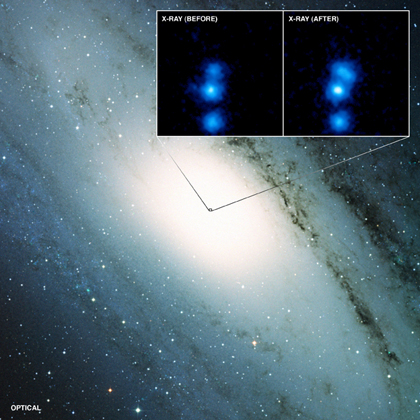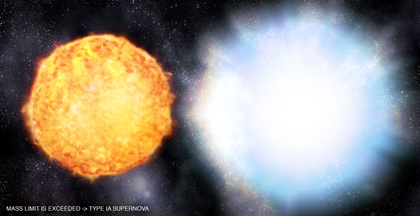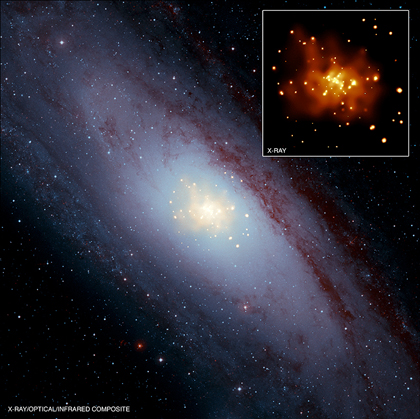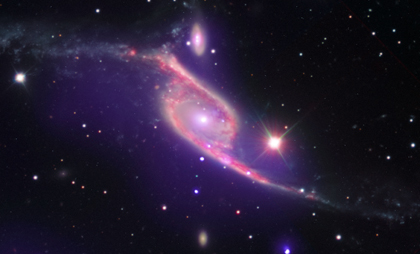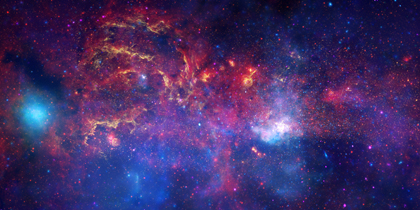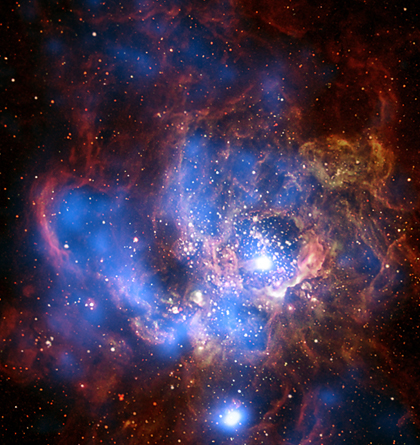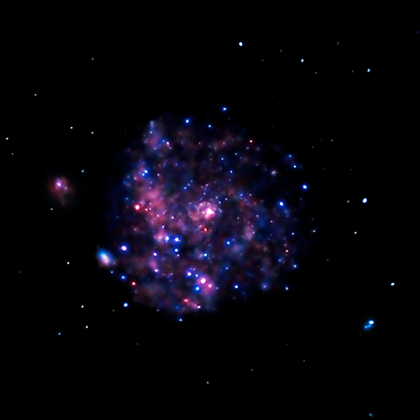Nearby Black Hole is Feeble and Unpredictable
Submitted by chandra on Tue, 2010-05-25 13:54The large image here shows an optical view, with the Digitized Sky Survey, of the Andromeda Galaxy, otherwise known as M31. The inset shows Chandra X-ray Observatory images of a small region in the center of Andromeda. The image on the left shows the sum of 23 images taken with Chandra's High Resolution Camera (HRC) before January 2006 and the image on the right shows the sum of 17 HRC images taken after January 2006. Before 2006, three X-ray sources are clearly visible in the Chandra image, including one faint source close to the center of the image. After 2006, a fourth source, called M31*, appears just below and to the right of the central source, produced by material falling onto the supermassive black hole in M31.
More: http://www.chandra.harvard.edu/photo/2010/m31/
Carnival of Space
-M.Watzke, CXC

